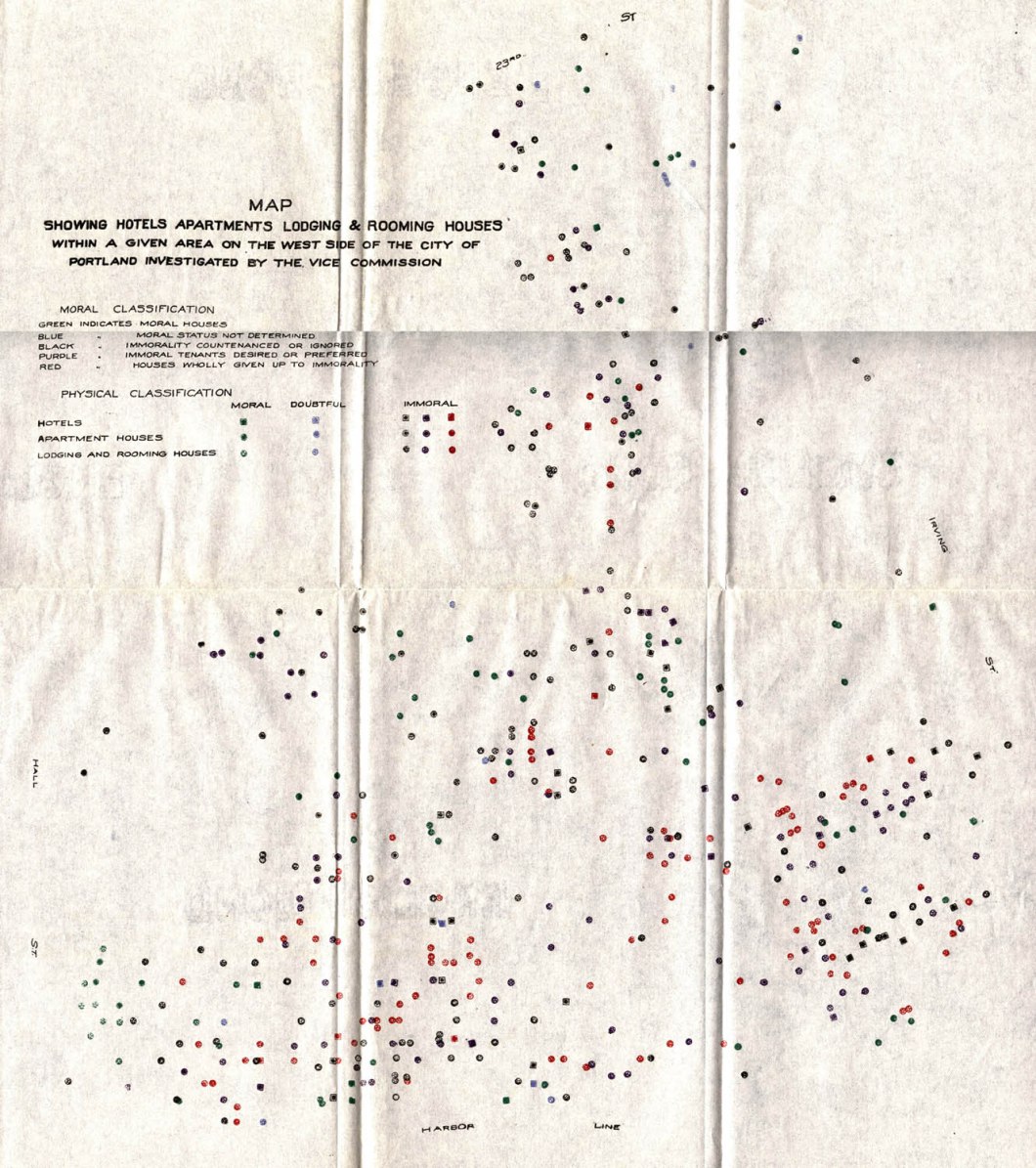101 Years Ago, Someone Mapped The Morals Of Portland, Building-By-Building

The 1913 report on vice in Portland resulted in this map assigning a different color to varying degrees of immorality at hotels, apartments, and boarding houses. Click image to enlarge. (via BigThink.com)
In a piece for BigThink.com, StrangeMaps’ Frank Jacobs writes about a 1913 report that actually mapped out the city’s hotels, apartments, and rental houses.
Each property was then judged on its morality and assigned one of five colors — green for “moral,” blue for “moral status not determined,” black for “immorality countenanced or ignored,” purple for “immoral tenants desired or preferred,” and the dreaded red, indicating “houses wholly given up to immorality.”
Interestingly, the map completely omits places like brothels, focusing instead on “places of public resort and accommodation… which by advertisement solicit the patronage of the public.”
Even more fascinating is the map creator’s decision to leave out the Portland street grid. As Jacobs puts it:
This vast archipelago of turpitude floats on an otherwise completely blank map, as unmoored from its physical surroundings as it is from its historical context. The resulting image is of Portland, a century and a year ago, as a monoculture of promiscuity, an entire city dedicated to the spread of (varying degrees of) immorality.
The commission that put together the report explained at the time that the purpose of the map was not to call out individuals, but to show the general conditions of immorality in the city at the time.
“For this reason and because this body is in no sense a detective bureau for the purposes of prosecution, the data set forth in this report avoids, as far as may be, identification of places and individuals,” reads the report.
Of the 547 dots and squares on the map, a mere 98 were deemed moral, with a whopping 431 coming under the general heading of immoral.
That group of sinning rental properties was then broken down as follows:
• Wholly given up to prostitution or assignation: 113
• Immoral tenants desired or preferred: 124
• Immorality countenanced or ignored: 194
As one can see from the descriptions of supposedly immoral properties, the investigators seemed to mostly be concerned with sex.
Of one hotel, it states: “On the water front, run by a Japanese. Rooms rented several times a day. Outwardly respectable, but immorality is permitted if done in a quiet way.”
Another is described thusly: “Several sporting women live here. Proprietor recently bought place with avowed intention of increasing this class of trade if he could get the ‘right kind of girls’. Business is carried on quietly.”
And then there’s boarding house, where two “French” women are “doing business.” The report quotes the owner as saying, “We are here for money and we propose to make it. The question of how we make it is not so important just so we make it.”
A few years back, the site Vintage Portland actually overlaid the 1913 morality map on the modern street map of Portland, so current-day resident and visitors can now see if their neighborhoods are still as full of the “sporting women” and “foreigners” that the report frequently cites as signs of immorality.
Want more consumer news? Visit our parent organization, Consumer Reports, for the latest on scams, recalls, and other consumer issues.

